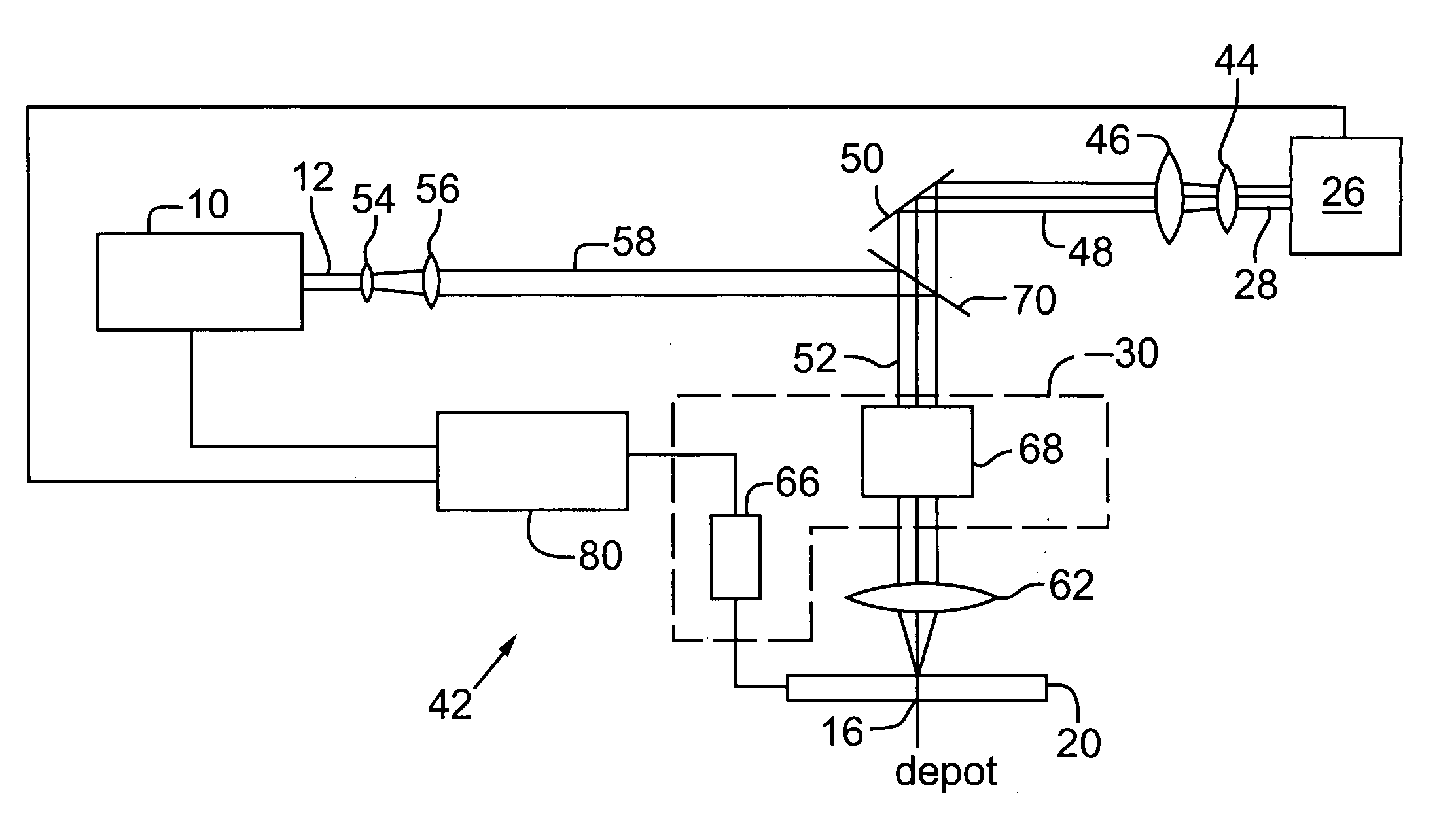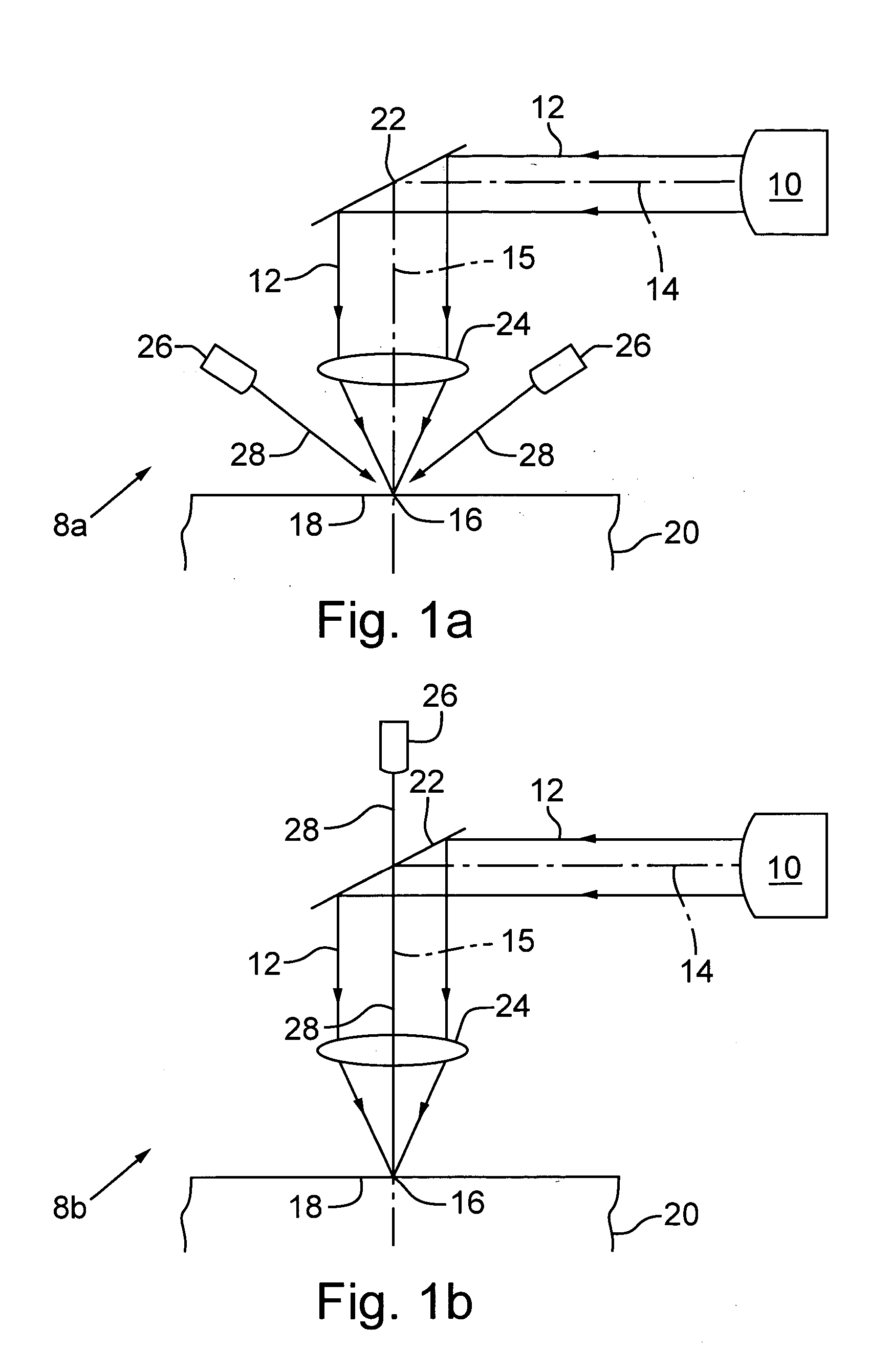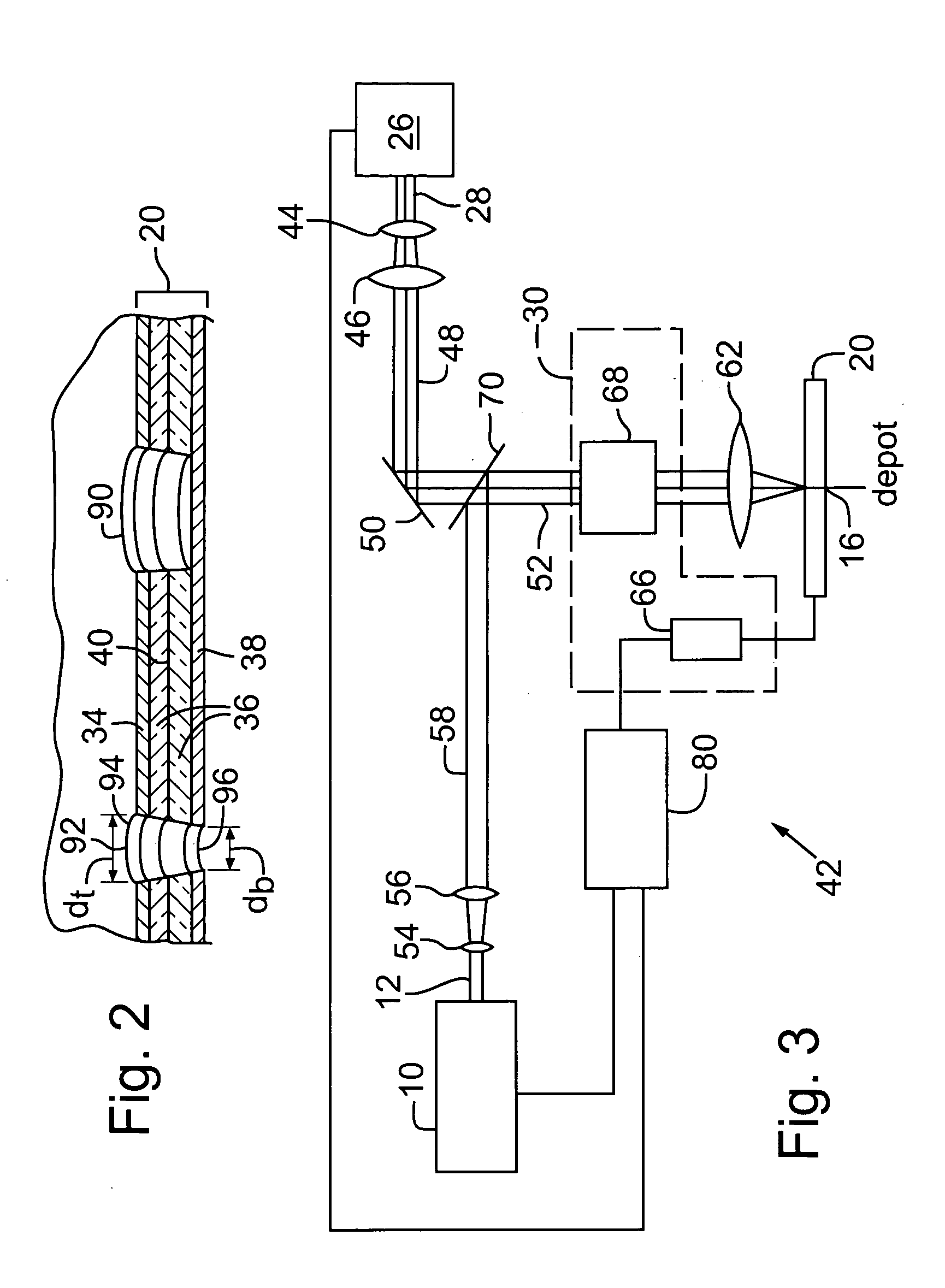Laser processing of a locally heated target material
a local heating and laser processing technology, applied in the field of laser processing a local heating workpiece, can solve the problems of reducing the energy density of the laser output, the inability to form through-hole vias using cosub>2 /sub>lasers, and the difficulty of forming through-hole vias in copper sheets having a thickness greater than about 5 microns, etc., to achieve the effect of improving the rate of material removal and workpiece throughput, improving process quality, and improving speed speed or efficiency
- Summary
- Abstract
- Description
- Claims
- Application Information
AI Technical Summary
Benefits of technology
Problems solved by technology
Method used
Image
Examples
first embodiment
[0041] In a first preferred implementation of the first embodiment, processing laser 10 is the above-described UV DPSS laser used to effect via formation and heating source 26 is a continuous wave (CW) or quasi-CW diode laser including a laser power modulator or a diode-driving current modulator. The diode laser is preferably a single or multiple diode laser operating at a wavelength of between about 600 nm and about 1600 nm and a power level of between about 0.01 W and about 1000 W, more preferably between about 20 W and about 100 W. The CW diode laser preferably emits a laser output having a wavelength that is between about 780 nm and about 950 nm. One commercially available CW diode laser is the FC series CW diode laser with fiber coupling, a laser wavelength near 808 nm, and an output power of between about 15 W to about 30 W manufactured by Spectra-Physics of Mountain View, Calif. Another preferred heating source 26 is an array of light emitting diodes with fiber coupling, a la...
second embodiment
[0050] In a first preferred implementation of the present invention, the processing laser is a mode-locked laser generating a processing laser output having a wavelength between about 200 nm and about 1600 nm, and the heating energy is generated by at least one of the following light sources: a diode laser, a diode laser array, and a fiber laser. More specifically, the processing laser is preferably a mode-locked IR laser including optional following pulse picking and amplification and emitting a light beam having a wavelength equal to or less than about 1064 nm, a pulse width of between about 0.01 picosecond and about 1000 picoseconds, and an average laser power of between about 1 W and about 50 W at a pulse repetition rate of between about 1 kHz and about 150 MHz. An exemplary commercially available mode-locked IR laser is a Staccato laser manufactured by Lumera Laser of Chemnitz, Germany. The currently available IR power for this laser is about 20 W for a repetition rate of betwe...
PUM
| Property | Measurement | Unit |
|---|---|---|
| wavelength | aaaaa | aaaaa |
| wavelength | aaaaa | aaaaa |
| wavelength | aaaaa | aaaaa |
Abstract
Description
Claims
Application Information
 Login to View More
Login to View More - R&D
- Intellectual Property
- Life Sciences
- Materials
- Tech Scout
- Unparalleled Data Quality
- Higher Quality Content
- 60% Fewer Hallucinations
Browse by: Latest US Patents, China's latest patents, Technical Efficacy Thesaurus, Application Domain, Technology Topic, Popular Technical Reports.
© 2025 PatSnap. All rights reserved.Legal|Privacy policy|Modern Slavery Act Transparency Statement|Sitemap|About US| Contact US: help@patsnap.com



